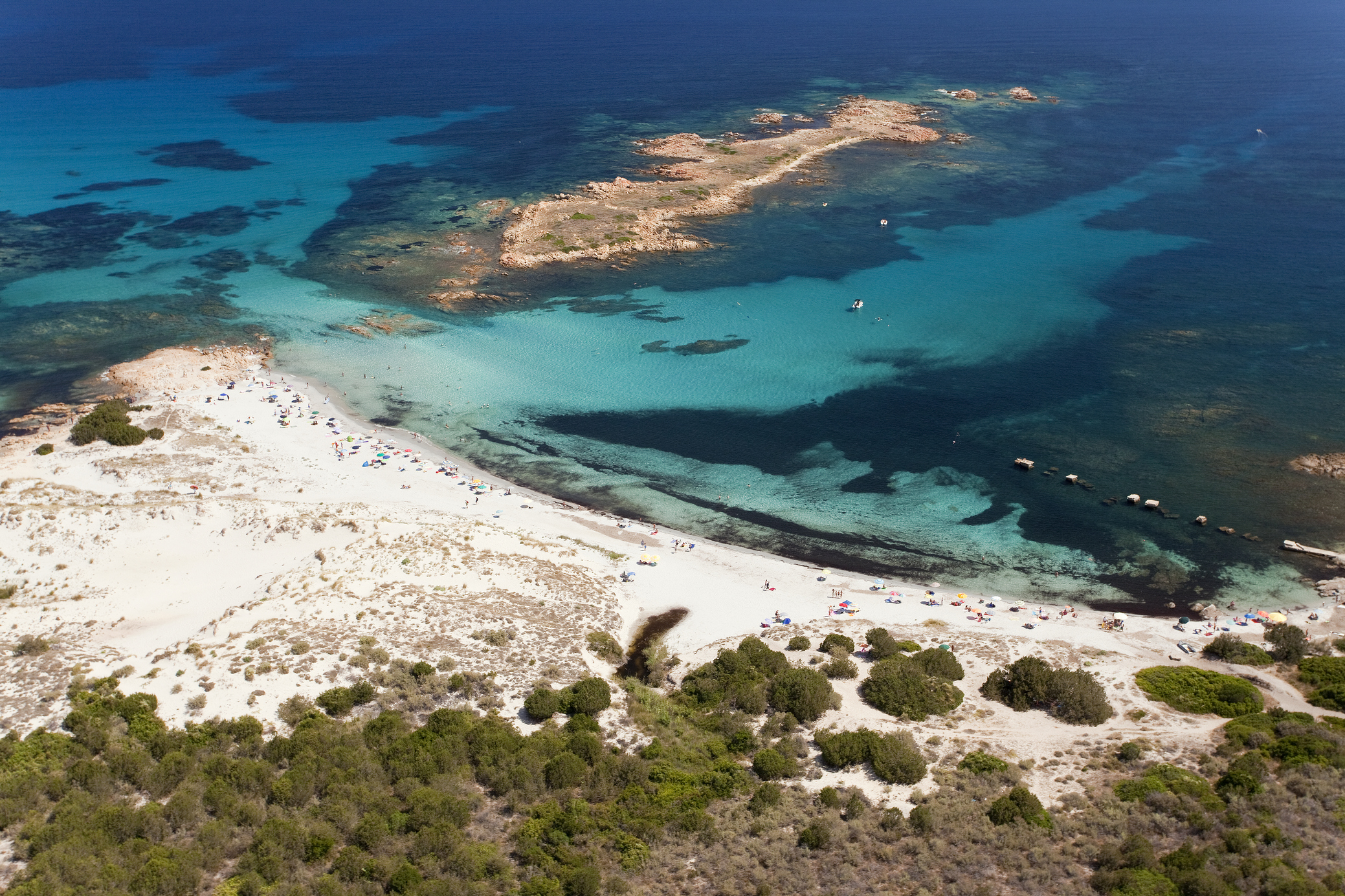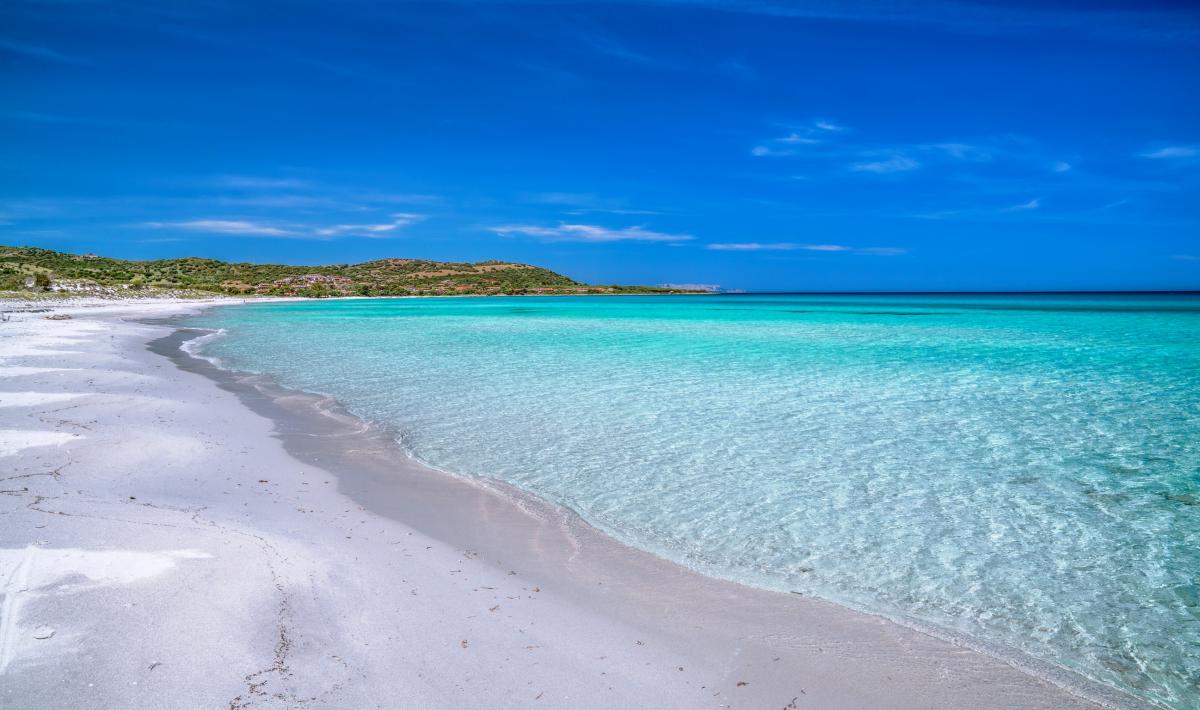Cape Comino: discover the hidden pearl of eastern Sardinia
Located in the beautiful east coast of Sardinia, Cape Comino is a corner of paradise that is definitely worth a visit. Characterised by spectacular dunes, crystal clear sea and breathtaking landscapes, it is a locality perfect for those seeking relaxation, unspoilt nature and history. In this article you will discover why Cape Comino is one of the most fascinating destinations in theislandideal for a day at the beach or for a real holiday of beauty and tranquillity.
Whether you are a lover of beachesa diving enthusiast or simply looking for a special place to photograph or explore, Cape Comino will amaze you. Read on to find out what to see, how to get there, what to do in the surrounding area and all the curiosities that make this place unique. meta in the heart of the municipality of Siniscola.

What makes the beach of Cape Comino?
La beach of Cape Comino is famous for its dunes of fine white sand, among the highest and most spectacular in the east coast. In this stretch are the largest dunes in Sardiniaa true natural spectacle that frames a long beach wild charm. La white sand and thecrystal-clear water create one scenario perfect for relaxing, swimming or simply strolling along the shoreline.
The presence of the maquiswith its junipers and intense fragrances, it adds an unmistakable touch to the ambience. Even the backdrop sea is shallow and sandy, perfect for the swimming and families with children.
Where is Cape Comino and how to get there?
Cape Comino is located in the municipality of Siniscolain the province of Nuoroalong the east coast of Sardinia, a few kilometres from locality by Cala Liberotto and by Posada. It is easily reached by car, following the SS125 Orientale Sarda and then the signs for the Cape Comino lighthouse.
Near the beach there is a large car parkoften charged in the summer months. There is no direct public transport, so the car is the best way to visit this area. For the more adventurous, cycling can also be a good alternative, especially in spring and autumn.

What to see in Cape Comino besides the beach?
In addition to the magnificent long white sandy beach, Cape Comino offers several points of interest, among which its ancient lighthouselocated on a rocky promontory overlooking the area. The lighthouse is an excellent vantage point from which to admire the coast extending southwardsuntil Golfo di Orosei.
Among the most curious historical attractions is the wreck of ship Commander Bafile, sunk in 1942 off the coast of Cape Comino. The wreck is reachable by swimming or by boat, and is a true paradise for those who love snorkelling and thediving. Another curious fact: in the depths close by were also found the remains of a Roman fleet from the time of Neroalso making the area interesting for archaeology enthusiasts.
What is the best time to visit Cape Comino?
The ideal time to visit Cape Comino runs from May to October, with the top in June and September, when the temperature is pleasant but not too crowded. In the middle months of summer, the beach can be quite busy, but never as busy as the better-known resorts of theisland.
Thanks to its wide sandy shoreeven on the busiest days, it is easy to find a quiet place to lie in the sun or enjoy the view of the large dunes of the east coast. Even in winter, with the sunny days, the landscape remains fascinating and perfect for relaxing walks.
Is there really a wreck at Cape Comino?
Yes, and not just one! Off the coast of Cape Comino, a a few hundred metres from the coastthe remains of the ship Commander Bafilean Italian warship sank in 1942. This wreckwell preserved, is visible during dives and has attracted divers from all over the world over time.
But it doesn't end there: in 1963, a small French fighter aircraft è plunged into the sea of Cape Comino and was dragged towards the coast from nets from a fishing boat. These events make the area not only beautiful, but also rich in mystery and history.
What is the link between Cape Comino and cinema?
Many do not know this, but Cape Comino was one of the sets of the famous film 'Overwhelmed by an unusual fate in the blue sea of August', filmed in 1974 by Lina Wertmüllerwith Mariangela Melato e Giannini. This contributed to the locality even beyond regional borders and immortalised the beach and theancient lighthouse in some of the film's most iconic scenes.
More recently, the director Guy Ritchie showed interest in the area, confirming the cinematic appeal of Cape Comino and its rocky coastline and suggestive.
Can I snorkel or dive at Cape Comino?
Absolutely. Waters crystalline and the sandy and rocky seabeds by Cape Comino are ideals for the snorkelling. Near the wreck of the ship Comandante Bafilenumerous marine species can be spotted. Access is also possible from the beachand in some places, the wreck è reachable by swimming.
Those who are more experienced can participate in guided hikes of divingorganised in the surrounding area. The sea here is rich in life and offers a perfect scenario for lovers of the underwater world.
What to see nearby: from Cala Liberotto to Posada
A few kilometres from Cape Cominodeserve a visit also Cala Liberottowith its small bays e scattered rocks, e Posadaa village perched on a hill with a picturesque medieval castle. From here there is a wonderful view of the entire Sardinian east coast.
Another interesting stop is Siniscola, the main town in the area, full of services, restaurants and small shops. Here you can also discover typical Sardinian products and enjoy a relaxing evening after a day of sea.
Where to park and what to bring
The parking a Cape Comino is well organised and close to the beachalthough it can get crowded in the summer months. It is advisable to arrive early, especially at weekends. Bring water, sun cream, an umbrella and, if you like to explore, snorkelling equipment.
There are not many services directly on the beachwhich makes it perfect for those seeking tranquillity, but it is good to be organised to spend the day in comfort.
Is it a family-friendly destination?
Yes, Cape Comino is perfect for families. La long beach, l'water low and the sandy seabed make it safe for children. The natural setting is relaxing and quiet, far from mass tourism. It is also ideal for a day out with grandparents or four-legged friends, always respecting the environment.
What makes Capo Comino different from other beaches in Sardinia?
Unlike other areas of theisland, Cape Comino retains a wild and authentic soul. Its dunesthe lighthousethe wreck, the bays hidden and the link with cinema give it a unique personality. It is a locality that slowly conquers you with its very fine sand, i unspoilt landscapes and the silence broken only by the sound of the waves.
If you are looking for a place that is not only beautiful to see, but also to experience, then Cape Comino is your next destination.
FAQ
What is the exact location of Cape Comino?
Cape Comino is located on the east coast of Sardiniain the municipality of Siniscola, south of Cala Liberotto.
Where can I park in Cape Comino?
A large car park near the beachoften for a fee in the summer months.
Is the beach suitable for children?
Yes, the beach of Cape Comino has a sandy and shallow seabedideal for the swimming safely.
Can I dive near Cape Comino?
Yes, they are possible diving close to the wreck of the ship Comandante Bafile, sunk in 1942.
Is there a wreck at Cape Comino?
Yes, the best known is the ship Commander Bafileand there is also a small French aircraft plunged into the 1963.
What is the best time to visit Cape Comino?
May to October, with June and September as months ideals to avoid crowding.
Is Cape Comino a crowded tourist resort?
No, compared to others locality sardines, it is quieter and touristically less exploited.
What attractions are nearby?
Nearby you can visit Cala Liberotto, Posada with its castleand the centre of Siniscola.
Is Cape Comino accessible by bus?
No, there is no direct public transport. It is advisable to arrive by car or bicycle.
Is it possible to bring animals to the beach?
Yes, but it is important to respect the local rules and to carry everything you need not to disturb the environment.

